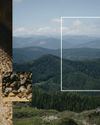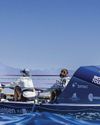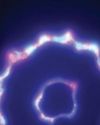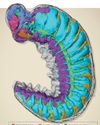At an Army development lab, creating food for troops is as much about technology as it is about cooking. We sent a chef to learn how it all works. And tastes.

THE ENTRANCE TO the U.S. Army Natick Soldier Systems Center is busy and confusing. Based on how much the soldier at the gate my Uber driver and I pulled up to was shouting at us, we were not doing a great job of navigating that entrance. But after a few phone calls and with the help of our escort for the day, I was finally on my way down the long path to the correct building.
Natick is an Army base where the military scientists at the forefront of the development of food systems for all of the armed forces (as well as NASA!) are developing new technologies like sonic agglomeration, vacuum microwave drying, and sonic swab technology. The part of Natick I wanted to visit is a warehouse full of super-cool machines that will potentially help our soldiers be able to do their jobs better, by feeding them foods that are packed with calories, nutrients, and flavor, but without weighing a ton or taking up much space. And they’re doing all of this while maintaining vitamin integrity so that soldiers and even astronauts can eat that food, be full, and also be healthy. As a chef, I spend all of my time trying to make food delicious, comforting, and entertaining, while keeping the process simple enough for my cooks to be able to complete orders in a timely fashion.
I wanted to find out how the scientists and engineers at Natick do all of those things, only with an added priority: making the food last for three years without refrigeration.
I was led into a large open room full of machinery and equipment that looks intense, but on closer inspection is a lot like regular, though super-large, kitchen equipment. And it smelled good in there. Like they were baking cinnamon buns and casseroles and... Anyway, let’s talk about science!
Bu hikaye Popular Mechanics dergisinin July 2019 sayısından alınmıştır.
Start your 7-day Magzter GOLD free trial to access thousands of curated premium stories, and 9,000+ magazines and newspapers.
Already a subscriber ? Giriş Yap
Bu hikaye Popular Mechanics dergisinin July 2019 sayısından alınmıştır.
Start your 7-day Magzter GOLD free trial to access thousands of curated premium stories, and 9,000+ magazines and newspapers.
Already a subscriber? Giriş Yap

ONE OF THE 'GREATEST THREATS' TO THE PACIFIC NORTHWEST ISN'T WHAT YOU THINK.
EXPERTS ARE PREPARING THE REGION AGAINST THE THREAT OF DANGEROUS VOLCANIC MUDFLOWS, KNOWN AS LAHARS, WHICH COULD INUNDATE THE COMMUNITIES SURROUNDING MT. RAINIER IN AS LITTLE AS 30 MINUTES.

THE WORLD'S TOUGHEST ROW
They rowed 3,000 miles across the Atlantic, battling unpredictable weather, chaotic seas, and finicky equipment. But what they discovered gave them profound new insights into the power of the ocean.

HOW TO DIY OFF-GRID SOLAR
SPEND THE TIME UP FRONT AND PLAN IT CAREFULLY TO AVOID DISAPPOINTMENT

Are We on the Verge of an ARMS RACE in SPACE?
RUMORS OF A RUSSIAN SPACE NUKE, ALONG WITH OTHER SATELLITE-TARGETING WEAPONS, HAVE MADE GEOPOLITICAL TENSIONS EXTEND INTO ORBIT.

Fresh Fingerprints on an Ancient Statue
A CLAY FIGURINE HAS SPENT MILLENNIA incomplete, waiting at the bottom of a lake for its long-dead craftsman to finish the Iron Age-era statuette.

Quantum Entanglement in Our Brains
IT HAS LONG BEEN ARGUED THAT THE human brain is similar to a computer. But in reality, that's selling the brain pretty short.

The Tools of Copernicus
WAY BACK IN 1508, WITH ONLY LIMited tools at his disposal, Nicolaus Copernicus developed a celestial model of a heliocentric planetary system, which he described in hist landmark work De revolutionibus orbium coelestium. It was a complete overhaul of our conception of the universe-one that, unfortunately, earned him the ire of the Catholic church for decades after his death-and forever changed the way we look at the stars.

Building a Sixth-Generation Bomber Raptor
THE GLOBAL COMBAT AIR Programme (GCAP)-a project by the U.K., Italy, and Japan to develop a sixth-generation stealth fighter-has been busy at the drawing board reshaping its vision of the future of air warfare. And judging by the new concept model unveiled at this year's Farnborough air show, that future has big triangular wings.

The Electroweak Force of the Early Universe
TODAY, THE UNIVERSE AS WE KNOW IT IS governed by four fundamental forces: the strong nuclear force, the weak nuclear force, electromagnetism, and gravity.

This Ancient Fossil With a Brain and Guts
WE KNOW WHAT FOSSILS LOOK like. For example, typical dinosaur fossils are bones turned to stone and preserved from the passage of time, located, if we're particularly lucky, in large collections that can be reassembled to represent the beast they used to prop up in their entirety.